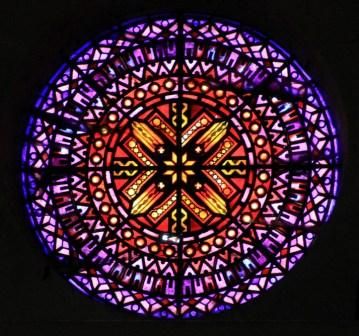
09/08/2015
A Synchrotron Is Also Good at Paleontology, Art or History
A Synchrotron Is Also Good at Paleontology, Art or History
A recent scientific paper reminds us that a synchrotron can be a decisive tool in paleontology: synchrotron X‐ray scanning has solved the mystery surrounding the 125 million‐year‐old tiny fossil eggs discovered in Thailand in 2003. A first analysis of the eggshells concluded that they belonged to a small theropod dinosaur, or possibly a primitive bird. Recent experiments carried out at the ESRF, the European Synchrotron, Grenoble, France, and published on July 15 in PLOS ONE by an international team of scientists have swept aside this conclusion and found evidence to solve this palaeontological mystery. Synchrotron imaging of the embryonic skeletons preserved in these eggs revealed that they are in fact anguimorph lizards. They are the oldest lizard embryos ever discovered in fossil eggs.
For its part, the ALBA synchrotron located in the Barcelona Synchrotron Park, gives an example of how a synchrotron can be used in the field of art and history. A group of researchers from Universitat Politècnica de Catalunya and from Universitat de Vic have measured in ALBA different decorations in glass and glazed ceramics from the historical periods of early Islamic glazes and late Renaissance. This group focused it research on the micro-and nano-crystalline compounds responsible for the colors and decorations in historic glass and glazed ceramics. The nature of these decorations depends on the procedures followed to obtain them. Two main sets of historic materials were studied: decorated stained glass fragments from various periods and cathedrals in Spain (14th to 16th AD) to discover materials and methods used and early opaque Islamic glazes from Syria and Egypt (7th and 8th AD) to identify the connection with opaque glass technology.
Remember: researchers from all over the world interested in using ALBA during the first half of 2016 can send their proposal by September 7: the scientific comity will select the best scientific projects allowed to use the synchrotron during this period of time.
For its part, the ALBA synchrotron located in the Barcelona Synchrotron Park, gives an example of how a synchrotron can be used in the field of art and history. A group of researchers from Universitat Politècnica de Catalunya and from Universitat de Vic have measured in ALBA different decorations in glass and glazed ceramics from the historical periods of early Islamic glazes and late Renaissance. This group focused it research on the micro-and nano-crystalline compounds responsible for the colors and decorations in historic glass and glazed ceramics. The nature of these decorations depends on the procedures followed to obtain them. Two main sets of historic materials were studied: decorated stained glass fragments from various periods and cathedrals in Spain (14th to 16th AD) to discover materials and methods used and early opaque Islamic glazes from Syria and Egypt (7th and 8th AD) to identify the connection with opaque glass technology.
Remember: researchers from all over the world interested in using ALBA during the first half of 2016 can send their proposal by September 7: the scientific comity will select the best scientific projects allowed to use the synchrotron during this period of time.
More news
19/12/2016
Foundation stone ceremony for Natura Bissé’s new world headquarters in Barcelona Synchrotron Park
15/12/2016
The Bioregion of Catalonia in Nature
07/12/2016
Digitus II Awarded By Barcelona Synchrotron Park As Best Business Idea Of The UAB University Research Park
29/11/2016
The European Commission awards the “Business & Biodiversity” label to Barcelona Synchrotron Park
21/11/2016
Barcelona 2nd Smart City in the World
15/11/2016
Barcelona Synchrotron Park Sponsors the PRUAB Ideas Generation Program









